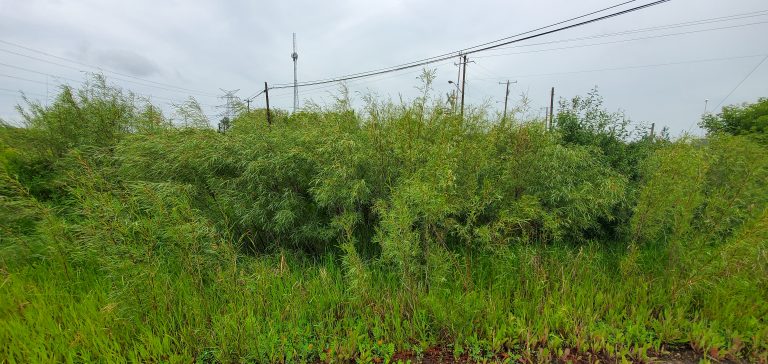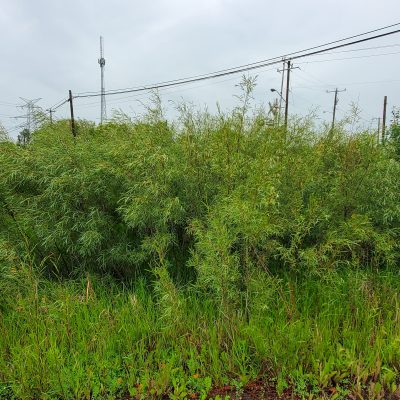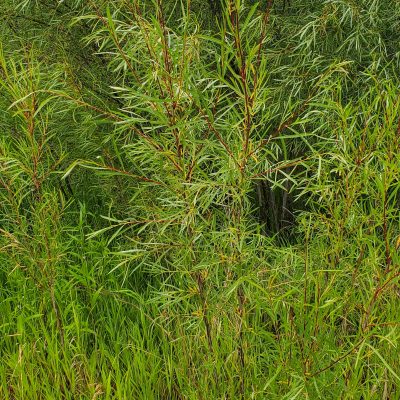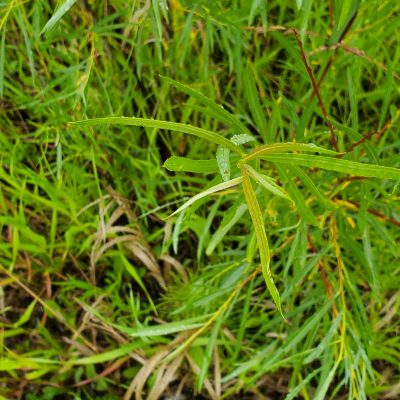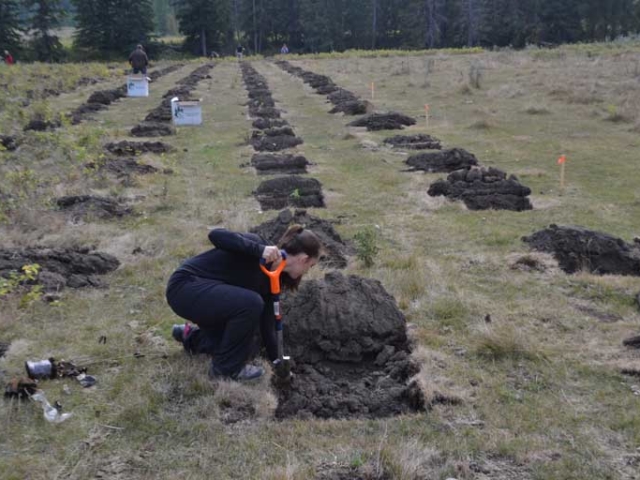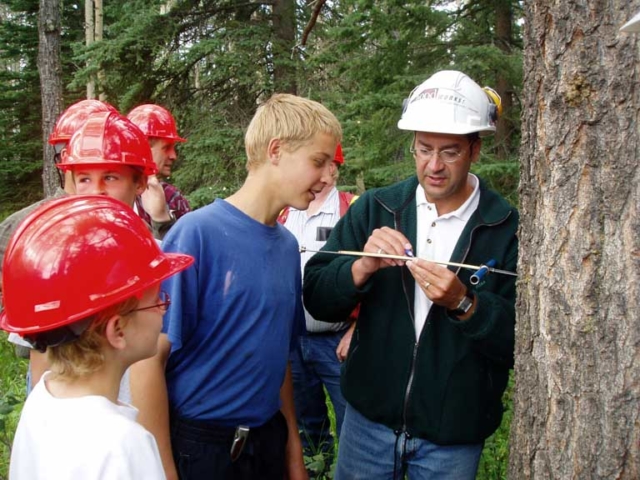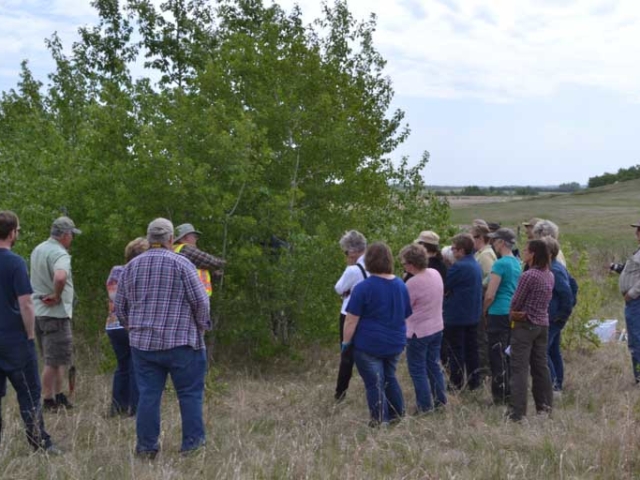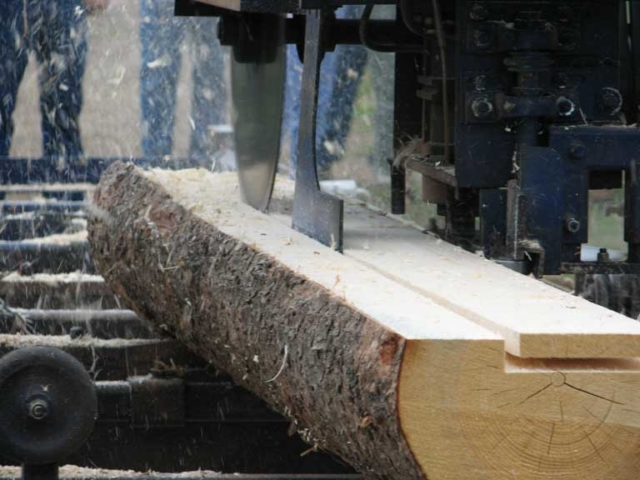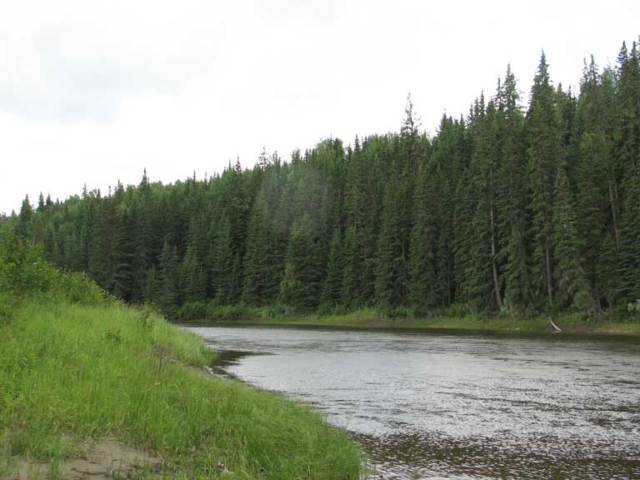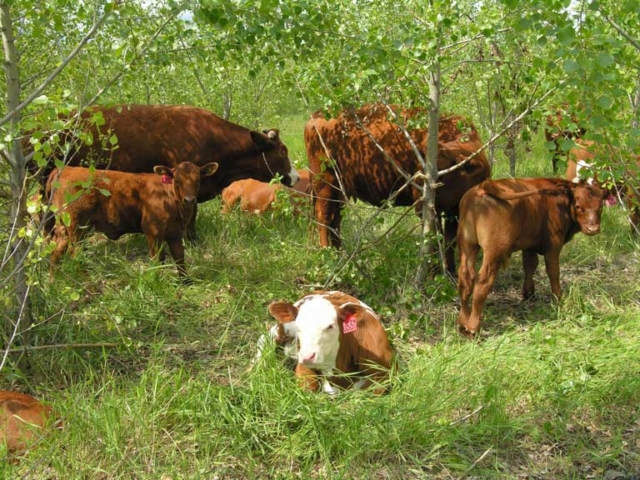Description / Details
Sandbar willow (Salix exigua)
Sandbar willow is commonly found in the banks or on the floodplains of water bodies across Alberta. Sandbar willow is sun loving, and is adapted to live with seasonal flooding: it is often the first to emerge on exposed banks and bars left by receding waters, where its deep binding roots can reduce erosion from subsequent floods. Sandbar willow is one of the few native willow species that suckers, and it can quickly grow into dense thickets.
Sandbar willow provides excellent, long-lasting pollen and nectar resources for pollinators early in the season. It also provides high quality forage for livestock and wildlife. Its wood grows straight particularly after coppiced (i.e. cut down at the base), and is excellent for crafts such as basket weaving. Its fast rate of growth and dense, thicket-forming growth form also make its wood a potentially valuable source of biomass energy.
Sandbar willow’s fast growth rate, suckering ability, and wildlife value make it an excellent addition for Eco-Buffers in moist to wet sites across the province. It is also highly recommended along or just above the average water level in riparian buffers. Like all willows, sandbar willow grows well from cuttings (refer to AWES’ Stem Cuttings factsheet).

